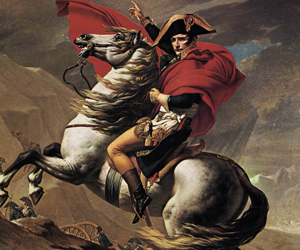Since the start of the year I have been playing through the total war games. They're the kind of games that while a man might think he can give them thirty minutes or so, they really demand a few hours at a stretch.
I have always been a fan of the epic stretch of wargames. The strategy of manoeuvring, of bluffing and second-guessing your opponent, of whom you know their strategies and their preferences and their bluffs: I think it's brilliant. The ludic aspect of gaming is, for me, at its strongest in the bluff and double-bluff of wargaming.
Tabletop wargaming is less so. While a worthwhile (if expensive) hobby, such an experience is more the mutual discover of a narrative than a gaming experience. By that I mean that tabletop wargaming is unbalanced, and will always be so. Points and sheets and systems are second to the desire to create a sandbox narrative; something that not everyone is inclined to do.
Fantasy wargaming has had poor representation in the gaming industry. Such games, from the Warhammer series to King Arthur, chug through engines keenly developed but poorly tested (and not through laziness, mind, but rather through their lack of players and history.)
To an extent, The Call of Warhammer mod for Medieval Total War II has changed this. It is evocative of its amoral setting. The graphics are superb. The gameplay is (reasonably) balanced. And it is free. 
Yet despite the success of this mod, I find myself drawn towards Shogun and Napoleon far more. These games have a simple addition that has transformed the gameplay for me. A morale bar.
Good friends will deride the addition of a morale bar. In a battle, they say, no general would have seen a helpful bar pop above the heads of the enemy and gradually decrease. True. And neither would a giant crane camera swoop over the heads of everyone. And orders would have to be given from a central unit, and run or shouted or flagged to your corresponding units. That will make for, one day, an excellent wargame of realism. But until then, the morale bar revolutionises the game.
Morale is what makes a wargame more than just a beat-em-up. In war, men (poor sods) don't fight to the last man. If they feel as if they might die, they run. It doesn't matter if they outnumber the enemy across the field. It doesn't matter if they are winning. It only matters if they are in immediate danger. Therefore, in true Sun-Tzu fashion, even with a smaller force, you can force the battle to be fought on your terms.
One example is fighting 700 men against 1400 in a Napoleonic campaign. I was defending a hill, and the enemy advanced along a straight line. In a straight fire-fight I would lose (as I had lost twice before, at 20 minutes a pop!) This time, though, I waited this he was almost in range before retreating my centre and left flank and charging with my right. Although I was in danger of being swamped and encircled on my left, I was able to break the morale of the far right unit. What this meant was I was continually attacking the flanks of my enemy's right while he was still ambling up the hill. Once a few more units broke, panic began to spread across those troops who weren't even fighting. Therefore, even when he had finally begun to encircle me, I was encircling him in return. Throughout all this the morale bar showed me exactly how much pressure to put on each unit to make them turn and run.
Wargaming isn't a genre to play just before bed. It requires, like with all RTS, to over-occupy your mind. Like playing pool before an exam, it is not possible to consider those concerns at the root of your subconscious: the only thing of which you are aware is the game. Which is a entirely new post in itself!
skip to main |
skip to sidebar
Copyright © 2011 Teacher Gamer | Powered by Blogger
 21:25
21:25
 A teacher
A teacher




0 comments:
Post a Comment